Recent Fire Damage Posts
Banish Fire-Causing Lint From Your Dryer
7/18/2022 (Permalink)
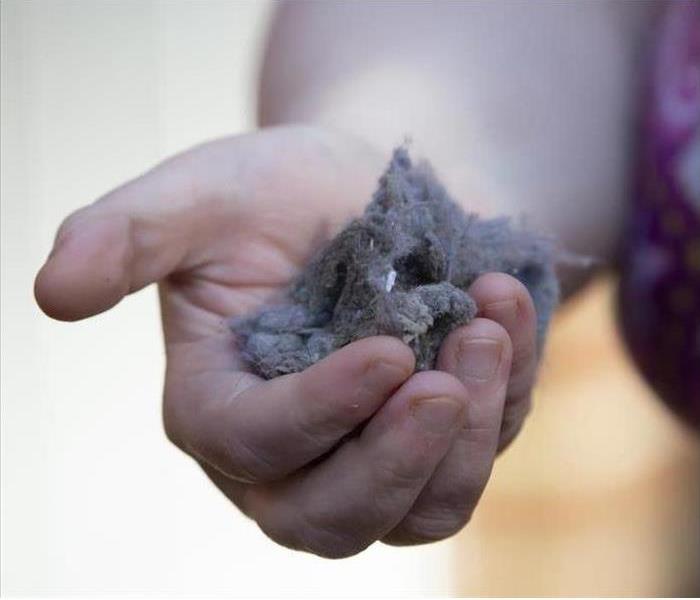 Prevent lint fires.
Prevent lint fires.
When dryer lint accumulates in the dryer and vents, the risk of a lint fire increases, in addition to decreasing the efficiency of the appliance. Fortunately, you can extend the length of the dryer, increase its efficiency, and protect against a dryer fire with three basic chores.
3 Chores to Prevent a Lint Fire
- Clean the Lint Screen Each Time You Run the Dryer
Before you put laundry in the dryer, pull out the lint screen and remove the fibers and debris caught there. If necessary, use a soft brush attachment to complete this step. From time to time, it's important to rinse the lint screen with water and a little bit of dish soap. This is particularly important if you use dryer sheets because a residue may accumulate on the screen. As a final step in this task, remove any lint inside the trap with your hand or a narrow vacuum attachment.
- Brush Out the Hoses and Vent
Cleaning out the vents behind your dryer is one of the most important steps in preventing a lint fire and the resulting fire damage. Start by unplugging your dryer and disconnecting the exhaust hose at both ends. If your dryer is an older model or is connected to gas, contact a professional to avoid gas leaks. Next, use a cleaning brush or special vacuum attachment to remove lint and other debris from the hose. A vent cleaning kit may be required to remove accumulated debris from the vent that extends from your laundry room to the exterior of your home.
- Open the Dryer and Remove Lint
Every six months (and more often if the dryer is used heavily,) remove the access panel, usually located at the back of the appliance. Remove any lint or debris and wipe off any areas with visible dust. Handle the heating element and wiring gently to avoid causing damage. Finally, replace the panel.
These steps can protect your appliance and home from a lint fire and the need for repairs from a Ogden, UT, cleanup and restoration team. How long has it been since you cleaned your vents?
How To Clean Your Backyard Grill and Prevent a Grease Fire
6/22/2022 (Permalink)
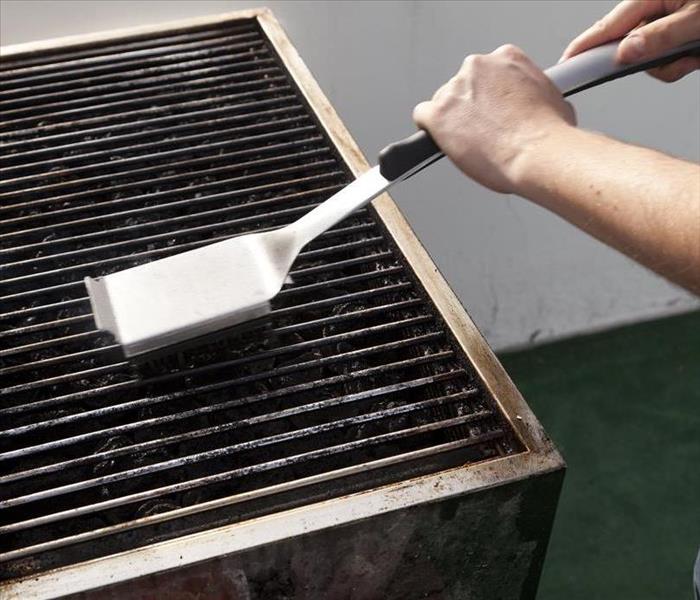 Cleaning Your Backyard Grill can also prevent Fire Damage.
Cleaning Your Backyard Grill can also prevent Fire Damage.
Proper grill maintenance is important for several reasons. Excess smoke and grease residue could change the flavors of your grilled meats and vegetables. The debris may also prevent the grill from getting as hot as you need it to be. A dirty grill could additionally spark a grease fire that spreads to your Ogden, UT, home. To avoid the need for fire damage restoration services, keep your grill clean by following the below suggestions.
Grill Cleaning Tips
To prevent leaves and other falling debris from landing on your grill, you should protect it with a cover whenever it is not in use. When you are ready to clean, turn on the grill briefly. The process works best when the grill is warm. Before you start cleaning, wait for the grill to cool down so you will not get burned.
While these basic tips apply to most grills, the cleaning process is not the same for every grill. There are several different types of grills, each of which should get cleaned differently:
- Pellet Grills
- Gas Grills
- Charcoal Grills
Cleaning Pellet Grills
A pellet smoker is fairly easy to clean. Start by removing the grates and soaking them in soapy, warm water. Then use a wet-dry vacuum to remove any debris that is inside the grill. Next, take a brush and scrub the drip pan and the inside of the chimney. Finish by wiping the entire grill with a damp cloth.
Cleaning Gas Grills
You should thoroughly clean your gas grill at the start and end of each grilling season. After preheating the grill for 15 minutes and turning off the gas, remove debris with a wet wire brush. Add a grill cleaning solution or regular soap for stuck-on grease.
You should also use the wire brush and water to clean the inside sections of the grill. When you are finished using the grill brush, wipe down the areas that you have just cleaned. This should remove any bristles that dislodged from the brush.
Grease can also block the gas ports of the grill. Remove the burners and use a dry brush to eliminate any clogs in the ports. Move the brush sideways so you do not accidentally force debris deeper into the ports. For the outside of the grill, check your instruction manual.
You can probably use regular soap and water to clean porcelain, painted steel and ceramic grills. However, stainless-steel grills require microfiber cloths and specialized cleaners.
Cleaning Charcoal Grills
Charcoal grills should be cleaned quite frequently. That is because ash from the charcoal settles at the bottom of the grill with every use. Over time, this ash could clog the grill vents.
Use either a stiff-wire brush or a wad of aluminum foil to clean the grates of your charcoal grill. Then put vegetable oil on a towel or rag and rub it on the clean grates. This should limit future buildups. Finally, put dish soap on a steel brush and scrub the inside of the grill bowl.
Grill cleaning may seem like an annoying process. Yet taking the time to wash your barbecue at the start and end of the summer should reduce the chances of a grease fire and improve the taste of your meat.
5 Important Smoke Alarm Questions
3/14/2022 (Permalink)
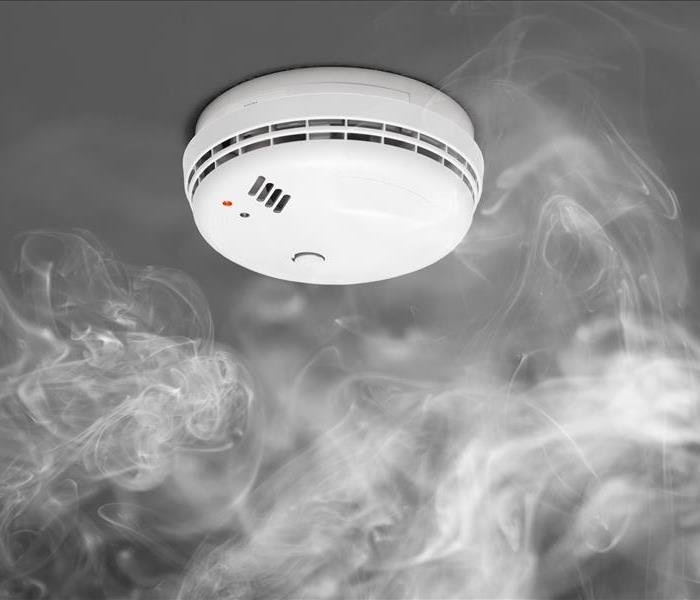 Learn How to Use your Smoke Alarms by following these Tips.
Learn How to Use your Smoke Alarms by following these Tips.
While you may not spend much time thinking about it, a smoke alarm or detector is an important part of your Ogden, UT, home. This small device can help keep you and your family safe and can alert you to a fire before it causes devastating damage. The following questions can help you get the most from your alarms.
Important Smoke Alarm Questions to Consider
1. What Kind of Smoke Alarm Should You Have?
Not all devices operate in the same way. When buying a new smoke detector, you will usually have two options. Photoelectric and ionization alarms are better at detecting smoldering and flaming fires respectively. Because of this, it is a good idea to have both types in your home.
You may also be able to find devices that use a combination of both technologies to ensure it has the best chance of alerting you to a fire.
2. How Many Alarms Do You Need?
A fire could start in any area of your house. There are many potential causes, including backed-up dryer lint, an unattended candle or a kitchen accident. Having alarms in several places makes it more likely that you will be alerted to a fire quickly, reducing the amount of fire damage restoration needed. There are some basic rules that you can use to determine where to put them.
There should be at least one detector on each floor, including basements and attics, in each bedroom and outside each sleeping area.
3. How Often Do Alarms Need To Be Tested?
While smoke detectors are designed to last a while, it is important to test them regularly to ensure they are still working as intended and that the battery is still functioning. You should do this at least once a month.
4. What Should You Do If the Alarm is Beeping?
It can be easy to think of a beeping alarm as an annoyance, but don’t ignore it. Beeping can indicate that there is a problem with the device that could reduce its effectiveness. A common reason for beeping is that the batteries are low. If this is the case, replacing the batteries should stop the noise.
The alarm may also go off if it needs to be cleaned or if there is an issue with the wires or other internal parts.
5. How Often Should You Change the Batteries?
How often an alarm needs to have its batteries changed depends on what kind it uses. If you have a device that uses a 9-volt battery or AA batteries, these should be changed at least every six months. Backup batteries in hardwired systems that use your home’s electricity should also be replaced twice a year. However, many newer alarms use lithium batteries that don’t need to be changed at all and will last for the life of the device.
Because they play such a big role in keeping your family safe during a fire, each smoke alarm in your house should be well-maintained, and there should be a sufficient number of them in the home. Test them regularly and change the batteries as needed to ensure that these important devices are working properly in case of an emergency.
How To Prevent a Dryer Fire
2/23/2022 (Permalink)
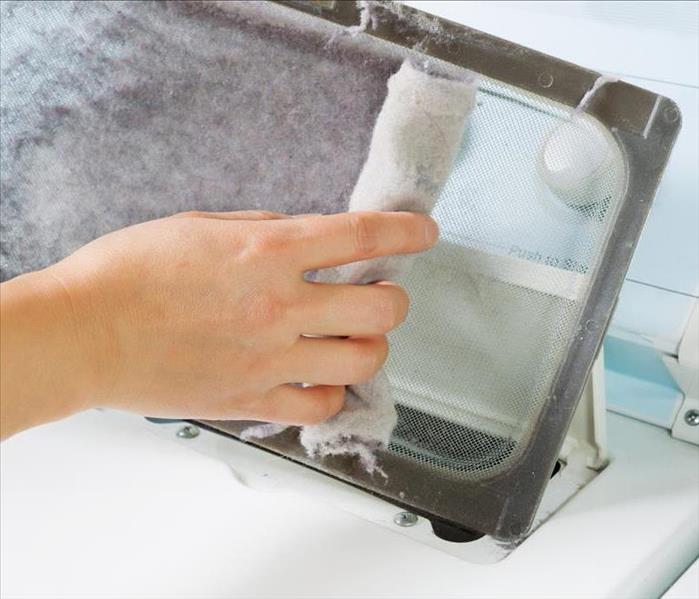 Important Tips to To Prevent a Dryer Fire in your Ogden, UT Home.
Important Tips to To Prevent a Dryer Fire in your Ogden, UT Home.
The average family runs their clothes dryer one or more times per week without any issues. However, when lint builds up in the exhaust of your dryer it increases the risk of a lint fire. Removing the lint can help prevent an accident that could damage your home.
Clean Your Dryer Exhaust To Avoid Fire Damage
One of the main risks of a dryer fire is lint buildup in the exhaust. The first thing you should do to reduce your fire risk is to regularly clean the lint out of the lint trap:
1. Remove the Lint Screen
Find the lint screen on your dryer. It may be located on the top, bottom or side or at the bottom of the dryer door. Pull the screen out to check for lint before you use your dryer.
2. Clean the Lint From the Screen
Use your hands to ball up the lint and then rub the lint ball on the screen to pick up the remaining lint. Discard the lint in the trash. Alternatively, you can use a cleaning or vacuum brush to remove the lint.
3. Rinse the Screen
Run the screen under the tap in your sink. Rinse until the screen is clear. You don't need to perform this step every time, but it is a good idea to rinse the screen once every few weeks to remove residues on the surface.
4. Vacuum the Screen Vent
Before you replace the screen, use the attachment on your vacuum to remove any lint in the trap. This helps prevent clogs.
5. Replace the Screen
Insert the screen back into the lint trap. Repeat this process before each load.
Deep Clean the Vents
Occasionally deep cleaning the vents can help prevent a blockage that could start a lint fire. First, unplug your dryer. Next, pull your dryer away from the wall and remove the exhaust hose by loosening the o-ring and then pulling the hose away from the dryer and wall port.
Move to a well-lit area and use a brush or the attachment hose on your vacuum to remove the lint from the hose. Buy a vent cleaning rod from a home improvement store. Follow the directions to insert the brush into the vent. Gently push and rotate the brush until the inside of the vent is clean.
Reattach the exhaust hose to the dryer and the port. Plug your dryer back in and run it to make sure no hot air is escaping from the sides of the vent. If it is, tighten the clamps on the exhaust hose.
Finally, find the vent on the exterior of your home. It probably looks like a square hole that is covered by a plastic or metal screen. Use a brush or small vacuum to remove lint from the vent. When you are done, reattach the screen. Taking these steps should help avoid a fire, but if one does occur, contact a restoration company in Ogden, UT, for assistance.
Regularly cleaning the lint trap and occasionally doing a deep cleaning of the exhaust hose and vent reduces your chance of a lint fire. It also helps keep your dryer working efficiently.
5 Tips for Maintaining Smoke Alarms
1/6/2022 (Permalink)
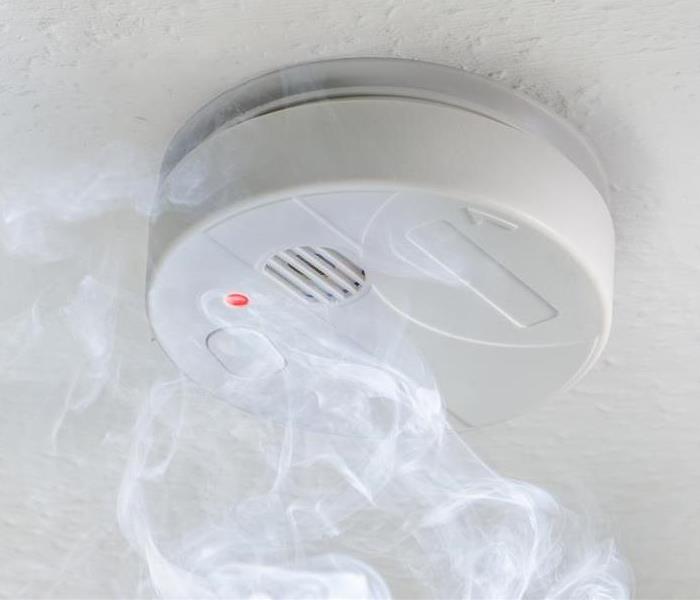 Checking your smoke alarm can be key for preventing fire damage in your Ogden, UT home.
Checking your smoke alarm can be key for preventing fire damage in your Ogden, UT home.
Smoke alarms are essential for keeping a safe home in Ogden, UT. A properly working fire detection system can potentially mean the difference between incurring no damage and sustaining a devastating total loss. Unfortunately, simply having a smoke alarm system isn't enough; you must ensure each unit is always operational and regularly maintained.
Important advices for your family's safety
Put these safety tips into practice to keep your family safe and your structure standing.
1. Invest in Good Quality Detectors
When it comes to your family's safety, penny-pinching is not an option. Research good quality smoke detector systems that have gotten good reviews from users and avoid ones with consistently bad reviews.
2. Test the Units at Least Once a Month
People often forget about their smoke detection system when doing their usual housekeeping. However, testing the units at least once a month can keep you aware of any potential issues with the system so you can correct them immediately. After all, taking a few minutes each month can potentially keep emergency services and the fire damage restoration company away.
3. Replace the Batteries at Least Twice a Year
Replace the batteries in your smoke detectors at least twice a year. This can provide peace of mind knowing your system will be there when you need it. It'll also reduce the risk of that annoying beeping sound that signals a low battery. Keep extra batteries on hand in case you discover you need them.
4. Clean the Units Annually
Dust and debris will accumulate on the individual units over time. This can block the sensors, making the smoke alarm malfunction. Once or twice a year, clean the units carefully with a vacuum hose or damp cloth.
5. Replace the Units Regularly
Unfortunately, like any electronics, your fire detection system won't last forever. Therefore, it's vital to replace the units regularly. Newer fire alarms are built to last longer, with a life expectancy of about 10 years. If you've had your fire detection system for a while, check to see when you purchased them and when the manufacturer suggests replacing them.
Ensure Proper Smoke Detector Installation
- Install units inside each bedroom and outside each sleeping area. Install detectors on every floor of the home, including the basement.
- Place basement alarms on the ceiling at the bottom of the stairway that leads to the next floor.
- Install detectors close to but at least 10 feet from any cooking appliances (if placed closer, false alarms could go off with regular cooking).
- Since smoke rises, install detectors on ceilings or high on walls. They should be placed no further than 12 inches from the ceiling. Never place smoke alarms near windows, doors, vents, etc. Drafts can interfere with the detectors' sensors.
- A system of interconnected units is the best type to install because all the alarms will sound when one goes off.
- Dual sensor smoke alarms are also recommended to detect both flaming and smoldering fires.
One of the most critical things you can do now is to check the functioning of your smoke alarm units. Ensuring they work today could mean the difference between no damage and pure devastation tomorrow.
Learning To Create an Effective Fire Escape Plan
10/18/2021 (Permalink)
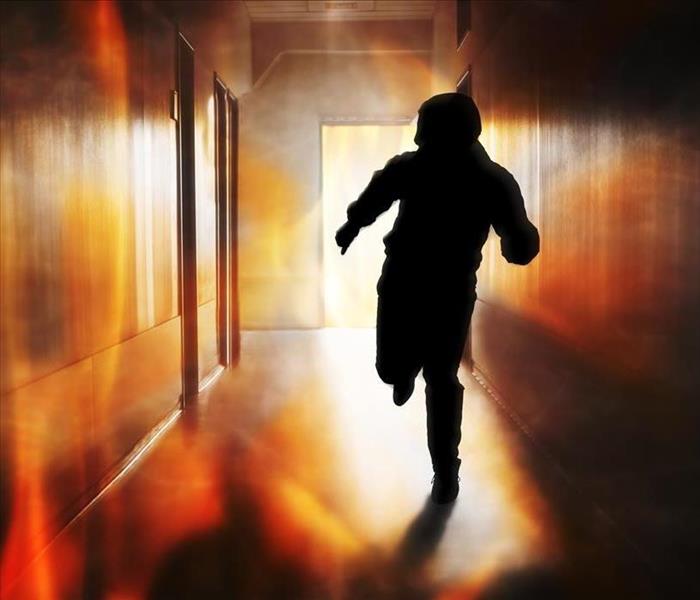 A fire escape plan can save your life during an emergency in your Ogden, UT residence.
A fire escape plan can save your life during an emergency in your Ogden, UT residence.
Do you have a fire escape plan? If not, you are not alone. Many families fail to plan for fire disasters, which makes the disaster even more dangerous. Having an emergency escape plan significantly reduces the risks of injury or death, but it is not enough to have a plan; it must also be an effective plan designed for your specific home and circumstance. You can contact the local fire department or a fire remediation company in Ogden, UT, for assistance.
4 Steps for the Ideal Fire Escape Plan
An escape plan is all about accessibility and ease of use. If you make your plan too complicated or your designated exit points too complex, you risk injury or worse. Every plan is only as effective as its weakest exit strategy, so make sure you can find and acquire the necessary tools to make escape easy and convenient. There are at least four steps for developing the ideal escape plan.
1. Rooms Need Two Exits
While most people feel that having two designated exits from their home is enough to keep them safe during a fire emergency, they are mistaken. You never know where a fire will start or how it will spread. If you only have two exits from your home, you up the chances you will become trapped.
An effective escape plan requires a minimum of two exits per room, meaning bedrooms, basements, attics, kitchens, bathrooms, etc., need two manageable exits. You do not have to get overly creative here. A window and a door are good escape routes; just make sure that every space in the home has a minimum of two ways out, including hallways.
2. Escape Routes Must Remain Clear
As you design your escape routes, remember the paths need to remain clear. Do not place bookshelves in front of windows or couches in the direct line to the front door.
While this seems like a simple rule, it is easy for people to become complacent, especially if they do not practice their routes at least once per month. When too much time passes, it is easy to forget about routes and clear paths. People become more interested in design and style, leading to clutter and potential barricades to your escape.
3. Communication Is Key
Do not underestimate the power of communication, especially repeated communication. When you come up with an escape plan, please do not shy away from talking about it. Quiz your kids on the routes out of their rooms and the house. Ask your spouse to explain to your children how to make quick choices during a fire. By having conversations, even repetitive ones, you ensure your escape strategy remains a priority in the minds of your family.
4. Practice Makes Perfect
Similarly, the physical practice is crucial to developing muscle memory. In a genuine emergency, your brain can freeze, wasting the few precious moments you have to escape a fire. By practicing at least once per month, you ensure your family knows how to get out of the house.
A fire escape plan is a crucial part of family safety. Follow the steps above to create and practice your ideal plan.
Understanding the Fire Cleanup Process
8/20/2021 (Permalink)
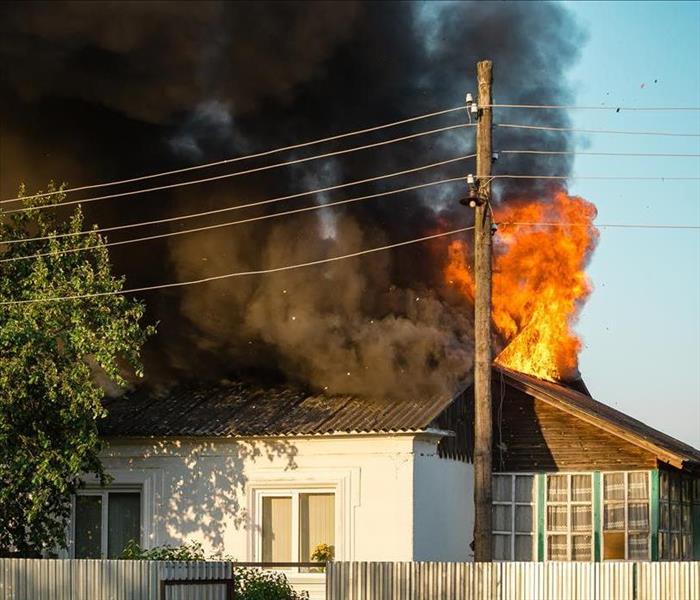 The cleanup after fire damage will require a professional team.
The cleanup after fire damage will require a professional team.
Most homeowners worry about the fire and smoke damage after a fire, but there are more issues to deal with than that. Most fires will leave behind a trail of debris and water damage in their wake. If you experienced a fire, contact a fire remediation specialist in Ogden, UT, for assistance. They will institute a multi-step plan for recovery, including:
- Water removal
- Debris cleanup
- Smoke and soot cleanup
- Restoration
Water Excavation
The first thing a remediation crew will need to tackle is any excess water in the home. Between the fire hoses and burst or broken pipes, a fire can leave behind a substantial amount of water.
The crew you hire will likely come prepared with shop vacs, pumps, and possibly van pumps. These tools should make quick work of the water.
With the water removed, the crew will need to dry the area before they begin cleanup and restoration. Again, they will have several tools for the job: dehumidifiers, fans, and air movers.
Trash and Debris Removal
When the area is dry, the crew you hire can begin removing all the debris and assess the house's structure. Sometimes, the level of damage does not become apparent until after water and garbage are removed.
Most items touched by the fire will need to be thrown away, especially porous items present in a chemical fire. However, you might be able to salvage non-porous or hard surfaces, as these can be cleaned easily of any residue.
Smoke and Soot Cleanup
The most challenging aspect of fire cleanup is smoke damage. Smoke and soot get into and contaminate everything. Even when a fire is small, the smoke and soot can contaminate multiple floors of a home because of HVAC systems connecting different levels of the house.
A mitigation crew will need to examine all appliances, devices, and surfaces to eliminate any trace of soot damage. If any amount of soot remains in devices and appliances, it can damage or contaminate the outputs.
In many situations, experts recommend discarding any equipment present in a fire because of the challenge of cleaning the items. If you choose to keep as much equipment as possible, you might want to hire a cleaning specialist.
Restoration
The final fire and smoke cleaning stage is the part of the process that all homeowners look forward to the most: restoration. During this phase of construction, the home's structural integrity is re-established, drywall is replaced, flooring is restored, and painting and other finishing touches commence. When all is said and done, the homeowner will never know that anything bad happened to their home, at least not by looking at it.
While smoke damage is a concern for many homeowners after a fire disaster, the primary concern should be the house's structural integrity. A fire is not an automatic loss for the structure of the house. In fact, there are many situations when mitigation and restoration services can rectify the beauty and soundness of a fire-ravaged home. The point is, allow experts the opportunity to assess your home because it might not be as bad as it seems.
How To Safely Use a Fire Extinguisher
8/17/2021 (Permalink)
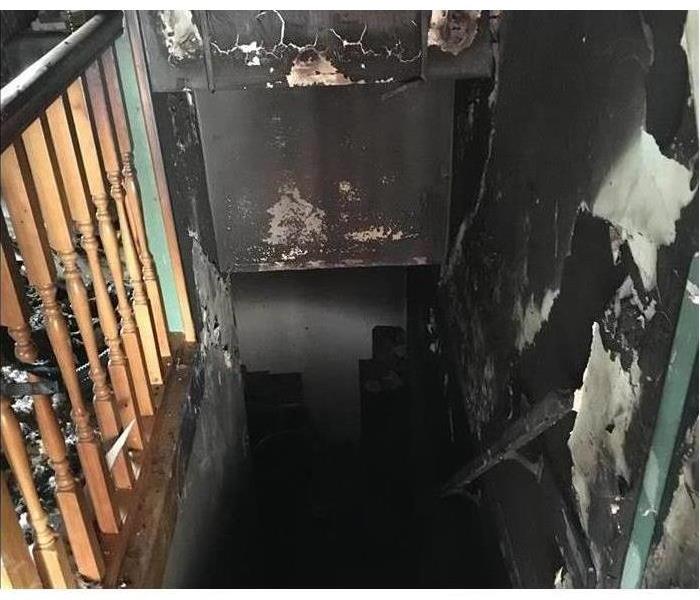 A fire extinguisher can save your life and your home in Ogden, UT.
A fire extinguisher can save your life and your home in Ogden, UT.
A kitchen fire can start in a matter of seconds and spread just as quickly. Knowing how to safely use a fire extinguisher in your Ogden, UT, a home could be the deciding factor between fire prevention and fire restoration.
Understand the Limitations.
A portable fire extinguisher can serve a wonderful purpose in protecting your home from the spread of flames. However, certain considerations must be made before deploying its use:
- First, it must be easily accessible. Fire can spread in mere seconds, and if your extinguisher isn’t nearby or outside of the inflamed area, its purpose will be negated before you can reach it.
- The fire should be in its incipient stage; small and contained to the original ignited material, such as a stovetop or wastebasket.
- A safe evacuation path should be behind you, not behind the flames.
- There is a limited amount of extinguishing agents within portable extinguishers that can be gone within seconds, rendering them useful only for the smallest of fires.
With these considerations in mind, it’s important to understand how to use the device.
Understand the P.A.S.S. Technique.
The effective range of your fire extinguisher depends on the style. The common ABC extinguisher utilizes a dry chemical stream that can reach five to twenty feet, discharging within ten to twenty-five seconds. To use the extinguisher is simple as remembering the P.A.S.S. acronym:
- Pull: Break the tamper seal by pulling the pinout.
- Aim: Direct your aim low, pointing the extinguisher nozzle toward the base of the fire.
- Squeeze: Squeeze the handle slowly and evenly, releasing a consistent stream of the extinguishing agent.
- Sweep: Use a sweeping motion from side to side, continuing to aim at the fire near its base until it goes out. Continue to discharge once the flames have been extinguished to prevent reignition.
Fire damage is something all homeowners want to avoid, but safety should always remain a top priority. If you have any doubt about your ability to stop a fire, or your portable extinguisher cannot smother the flames, evacuate immediately, and call emergency services.
For more information, please visit us at SERVPROogdenut.com/fire-smoke-damage-restoration.
Mitigation Reduces the Risk of Fire Damage
7/29/2021 (Permalink)
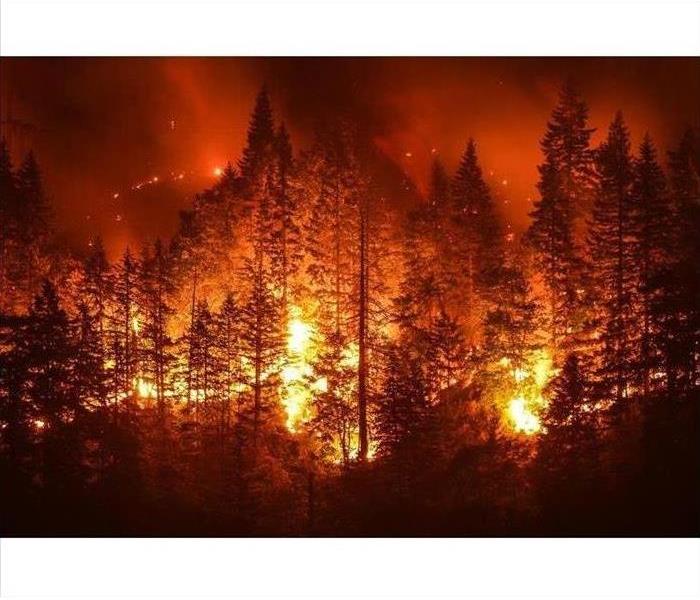 How likely are wildfires in Ogden, UT?
How likely are wildfires in Ogden, UT?
There's more to recovering from a home fire than just putting out the flames. After the smoke has cleared, you're likely to face a lot of work, often including unseen damages. Fire restoration efforts generally begin with inspections, move on to mitigation and cleanup, and then conclude with rebuilding. During inspections, professionals will look for structural weaknesses, smoldering hot spots, and areas of risk.
Mitigation
The next step is mitigation. What does this involve?
- Removing fuels from the home could lead to increased heat
- Clearing away brush and debris that could catch fire
- Assessing risks on the property
- Creating a defensible space around the home
Mitigation is generally an issue when wildfires are a risk. How likely are wildfires in Ogden, UT? Get area-specific answers from fire restoration and cleanup professionals. Defensible space is a zone around the home that has been treated or cleared to slow the spread of fire. Many communities require a specific zone around homes to ensure the safety of homeowners and firefighters and to slow down wildfires.
Clean Up
After creating a defensible space, professionals will move on to treating smoke damage and will carry out other damage cleaning tasks. Smoke leaves behind two types of damage, including visible soot and unseen odors. Professionals have dealt with problems like yours many times and have the tools and experience necessary to handle the cleanup.
Rebuilding
Many of the products used to control fires and to clean and sanitize a home after a fire contain caustic ingredients, including tri-sodium phosphate. You may feel tempted to tackle cleanup and repairs on your own, but many experts and local authorities recommend leaving these tasks to professionals. When your home has been restored, rebuilt, and repaired, you'll still have plenty of work you can do.
When your home has been affected by fire, you'll have plenty of work to do; let fire restoration professionals tackle inspections, mitigation, and rebuilding. You can turn your attention to the safety of your family and the recovery period after professionals have finished their work.
Decorative Alternatives That Are Safer Than Candles
2/23/2021 (Permalink)
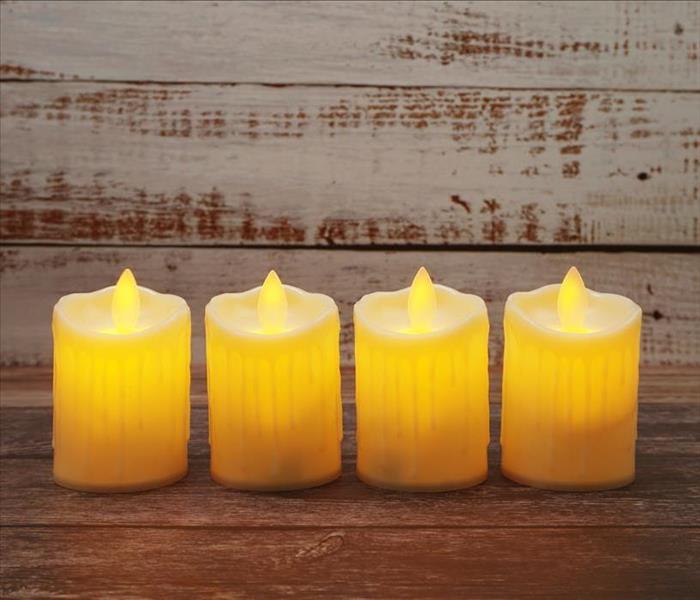 Candle alternatives can keep your home safe from fire damage.
Candle alternatives can keep your home safe from fire damage.
There is nothing quite like the look, smell and feel of the flame from a candle, but they can be dangerous. There is nothing worse than having to involve insurance companies and a smoke and fire cleaning company to repair the smoke and fire damage from a candle fire. Fortunately, you can alleviate all of the safety concerns by using one of the many alternatives available in Ogden, UT.
Candles Are Dangerous
Candles are inherently dangerous because of their flames. They can easily be:
- Knocked over by kids, pets or partygoers
- Placed near something flammable
- Burned too low
- Forgotten about
An easy way to avoid the dangers of candles is to purchase candle alternatives.
3 Candle Alternatives
1. Flameless Candles
Flameless candles look and feel just like regular candles. They even flicker like candlelight. These simple devices operate off double or triple A batteries and provide similar lighting conditions. Since these battery-operated candles do not generate heat, they are safe around pets, kids and partygoers.
2. Electric Candles
Like batter operated candles, electric candles produce the same look and ambiance as a real candle. These candles plug in instead of working off batteries. They are a bit less versatile because of the plugs but work off the same principle. These are great candle alternatives if you want the look of regular candles.
3. Candle Warmers
Candle warmers are useful when you want the scent of a candle but not the danger of a scented candle. These lamps are a flameless solution for all those who love the myriad of scents that candle makers have created but don't want to deal with the fire. The heated light sits above the scented candle. It melts the wax and releases the scent into the room.
No matter which of these candle alternatives you choose, they are much safer than having an open flame around. These alternatives are available in almost every department store or grocery. Keep yourself and your property safe by using a flameless alternative.
Choosing the Right Smoke Detector for Your Home
12/28/2020 (Permalink)
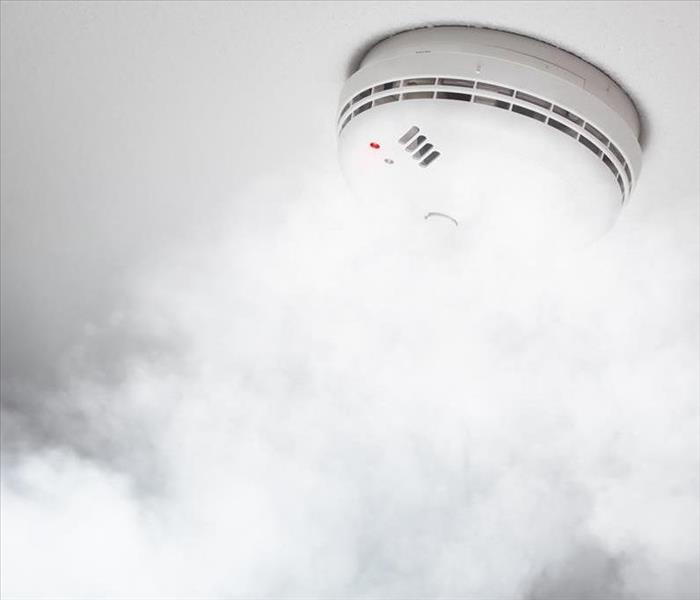 Having a smoke alarm in your home, can reduce the damage of a fire.
Having a smoke alarm in your home, can reduce the damage of a fire.
A house fire can be devastating to you and your family. It can rapidly destroy everything in your home. Having the right smoke alarm can save your life. Unfortunately, with so many types on the market, it can be difficult to choose the perfect one for you and your home. Here are a few things that you need to consider before purchasing one.
3 Things To Consider Before Purchasing a Smoke Detector
1. Types of Smoke Detector
Like anything, there are multiple types of fire alarms. Each type detects smoke in different ways. The types are:
- Air-sampling
- Photoelectric
- Ionization
- Dual sensor
Each works in a different way. For example, an ionization smoke detector uses small amounts of radioactive particles to sense smoke in the air around it. A photoelectric alarm uses light to detect smoke and a dual-sensor alarm does both.
2. The Size of Your House
This is one time that size matters. You have to take into account the size of your home for fire safety. It will not only determine the amount of smoke alarms you need to install, it will also tell you where to place them.
The best solution is to have a smoke alarm in each room but this is not always practical. At the very minimum, a smoke alarm should be installed in each room that a fire is more likely to start. Remember faulty wiring, accidental fires and electrical storms can also cause fires so kitchens are not the only places you need to protect.
3. How It Is Powered
Some fire detection devices are powered by batteries while others are wired into your home electrical system. Although it is more expensive to have it hardwired in, it is a good idea if you are bad at changing batteries. When a battery gets low your smoke detector may not work.
Although a smoke alarm may not save your home, it can save your life. It can also reduce the damage and the overall cost of fire damage. If your home is damaged by fire call a fire damage remediation company in Ogden, UT.
How To Save Your Belongings From Smoke Damage
10/20/2020 (Permalink)
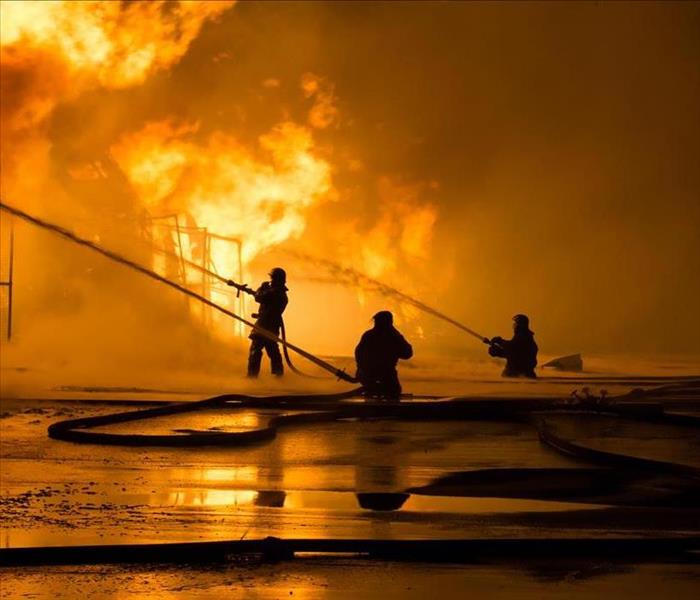 Fire damage in your Ogden, UT home can be devastating.
Fire damage in your Ogden, UT home can be devastating.
A fire in your Ogden, UT, home can leave you reeling. Even after the flames are out, the effects of smoke and soot can linger in every nook, cranny and favorite old T-shirt. From taking your smoky clothes to your favorite dry-cleaning establishment to ultrasonic cleaning, the good news is that it may be possible to save many of your belongings after a home fire.
2 Ways to Save Your Belongings From Smoke Damage
1. Clothing
After a fire, the cleaning instructions on your clothes’ tags go out the window. First, remove any soot from your wardrobe by taking it outside and shaking as much as you can off.
Next, enlist the help of your fire damage restoration company to deodorize your garments. If you skip this step, those clothes are likely to smell like smoke even after cleaning. Fire damage mitigation technicians can perform an ozone treatment that removes smoke odor for good by breaking the smoke down at the molecular level.
After clothes have been thoroughly deodorized, you may choose to wash some at home and take others to your preferred dry-cleaning service.
2. Virtually Anything Else
Fire damage professionals can also remove smoke and soot from a variety of materials using ultrasonic cleaning. These surfaces and substances include:
- Glass
- Plastic
- Metal
- Ceramics
- Rubber
Ultrasonic content cleaning uses highly pressurized waves to remove stuck-on smoke and soot particles. It’s especially useful in cleaning hard-to-reach places, which is why it’s routinely used in the medical and jewelry industries. While a fire used to spell disaster for content storage, this modern form of cleaning has drastically increased the number of household items, furniture and beloved family heirlooms that can be rescued from smoke and soot.
After a fire, you have enough to worry about. Let the professionals take most of the work off your hands — save a visit to your dry-cleaning outlet, perhaps — by using their experience and equipment to restore as many of your belongings as possible to their pre-fire state.
Fire Restoration and Content Cleaning
9/14/2020 (Permalink)
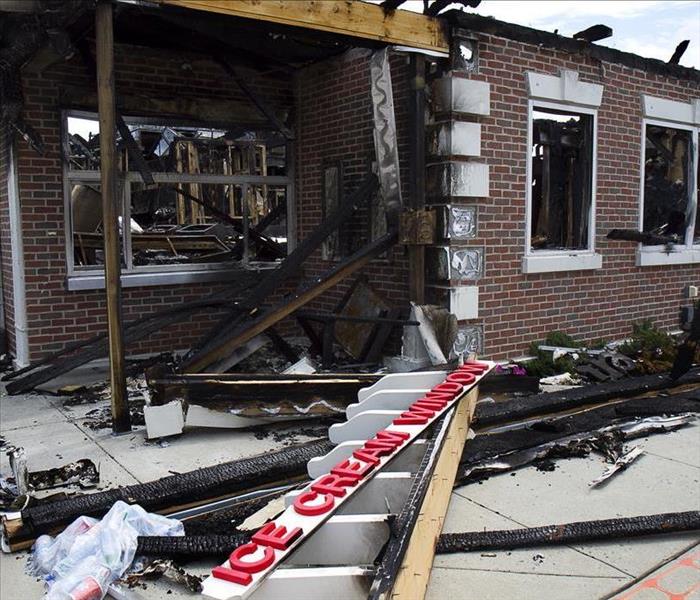 Commercial fire damage.
Commercial fire damage.
As a business owner, the threat of any disaster is a nuisance, but fire is potentially detrimental to your operation. Recovery from a fire can cost thousands of dollars in repairs, and you may find that you are throwing away more than you can keep. While a fire restoration company in Ogden, UT, can help your business return to normal, you may need to depend on outside organizations for the salvaging of essential documents and materials. There are a few services that can help.
- Dry-cleaning companies
- Remediation specialists
- Specialized cleaners
3 Services That Help With Fire Restoration
Dry-Cleaning Companies
Dry cleaners can help to clean porous items, like carpets ad other fabrics. Smoke damage tends to make these materials smell, and the potentially carcinogenic chemicals from the smoke are not safe for workers to breathe in. Therefore, the cleaning service will put the fabrics through steam washes to clean them, making them sanitary and safe.
Remediation Specialists
Remediation companies are great for content cleaning of permanent fixtures and removing damaged content from the premises. The team will use chemical cleaners and steam machines to restore smoke damaged non-porous items. They will also use technology, like ultrasonic systems. The primary goal of these companies is to ensure that the building is sanitized and deodorized before the restoration process.
Specialized Cleaners
If your business has unique documents that were damaged in the fire, then you may need the expertise of specialized cleaners. There are specific restoration experts that can salvage porous items, like paper and photos. If the fire damaged your files, then reach out to one of these specialists. Also, if computer systems or other content storage devices were damaged by smoke, many tech experts claim to be able to clean and restore electronic systems.
Whether you need dry-cleaning services or you want a specialized cleaner for your computer systems, you can salvage more than you think from a business fire. Reach out to a restoration company to discuss the cleaning methods they use.
The Basics of Smoke Odor Remediation
8/25/2020 (Permalink)
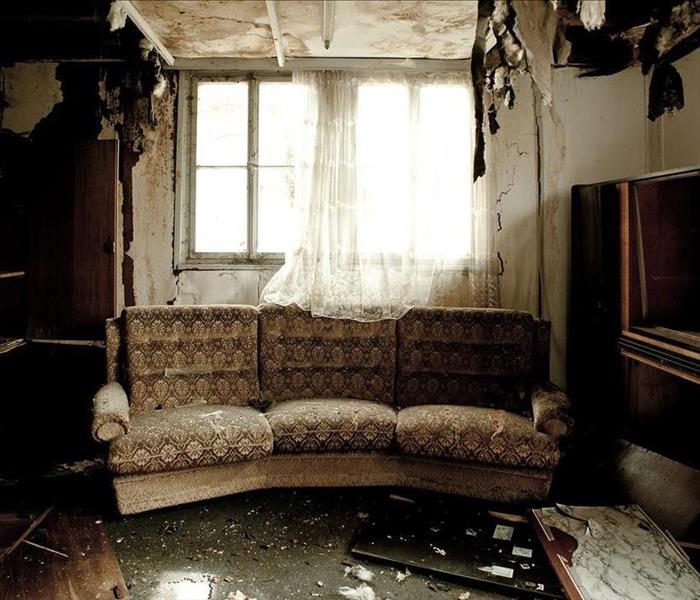 This room needs smoke remediation after small fire.
This room needs smoke remediation after small fire.
House fires often cause a significant amount of residual smoke odor. While smoke cleaning products advertise odor removal, most fires will require the expertise of a remediation company in Ogden, UT. Odor remediation typically comprises a four-step process.
- Remove damaged items
- Clean
- Run equipment
- Seal materials
4 Steps For Smoke Odor Remediation
1. Remove Damaged Items
To get an actual idea of the level odor in your home, a remediation crew will want to remove any visible smoke damage, including damaged items that may hold odor. The salvageable items removed from your house will undergo cleaning separate from the property. You can find several local cleaners who specialize in smoke damaged materials.
2. Clean
With all loose items and debris out of your home, the remediation crew will begin the smoke cleaning process. The physical cleaning may involve disinfectant, detergents and other materials to scrub and remove remaining soot. However, the company may spend a significant amount of time vacuuming the space to ensure they do not make matters worse.
3. Run Equipment
The mitigation crew may use a variety of equipment to help reduce the odors in the air. For example, air filtration devices, thermal foggers and ozone machines are standard tools used in odor removal. The team may also need to use shop vacs, water pumps and dehumidifiers to remove excess water and dry the house from fire hose exposure.
4. Seal Materials
Many remediation companies may suggest sealing porous materials, like wood floors, to trap the odor rather than replacing the material. While replacement is the best way to remove odor, it is not the most cost-effective solution, especially when the structure and appearance of the material remain intact.
Many homeowners try DIY smoke cleaning to save a few bucks, but when dealing with the aftermath of a significant fire, DIY methods are not the most workable solutions. Contact a fire remediation specialist to discuss alternatives and assessments.
Prevent Expensive Losses With a Fire Sprinkler System
7/21/2020 (Permalink)
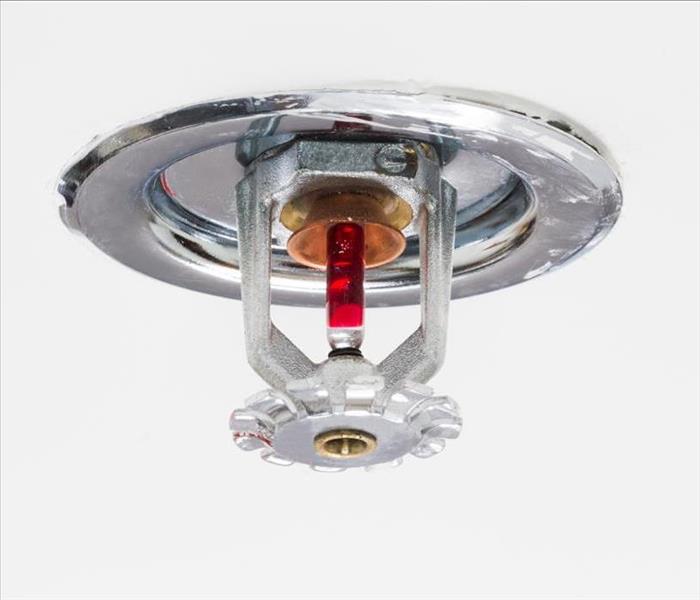 A fire sprinkler system is one of the most effective tools
A fire sprinkler system is one of the most effective tools
The fire sprinkler system is one of the most effective tools for putting out commercial fires. When installed and used appropriately, these fire suppression systems reduce losses by more than 65 percent. According to the National Fire Protection Association, sprinkler systems also prevent deaths and injuries:
- Death rates in properties with sprinklers were 87 percent lower than in those without.
- Civilian injury rates in properties with sprinklers were 27 percent lower.
- Firefighter injury rates were 67 percent lower on properties where sprinklers were present.
Another finding by the NFPA shows that about $25.6 billion in property damage was the result of fires in 2018. Clearly, sprinkler systems are vital to the safety of everyone living or working in commercial properties affected by fire, as well as for the prevention of property losses.
How do commercial systems prevent losses for your business?
Heat Detection
If you're worried that about false alarms setting off the fire sprinkler system, you'll be happy to know that it's heat, not smoke, that triggers the system. Sprinkler heads are equipped with glass bulbs containing a glycerin-based liquid. As a fire grows and the air heats up, the increased temperature heat the liquid in the sprinkler head. The heated liquid expands and bursts the bulb which activates the sprinkler.
Pressurized Water
The heads of the sprinkler system are connected to a pressurized system of pipes and a reliable water source. When the valve on the sprinkler head opens, pressure forces water to spray out in a wide arc that smothers the fire and prevents new flames from igniting.
Damage Prevention
Fire suppression systems are built to reduce the amount of damage done to your property. When the system works effectively, sprinklers are only activated where flames are present. This limits damage from the fire and from the water used to suppress the fire. In most cases, the amount of water used by the sprinklers is less than the amount that firefighters would use. This also means that your fire sprinkler cleanup costs will be lower.
Once the fire has been contained and it is safe to re-enter your property, you can contact fire and damage repair professionals to return your Ogden, UT, to its pre-fire condition. Ultimately, the repairs necessary are much easier to handle when a fire sprinkler system is active on your property.
How To Protect Your Home From Cigarette-Related Fires
7/21/2020 (Permalink)
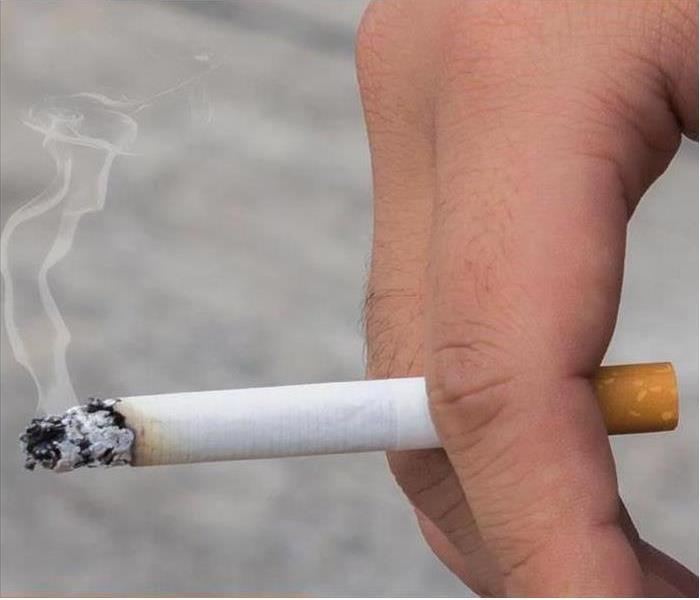 The best way to prevent a cigarette fire is to stop using cigarettes completely.
The best way to prevent a cigarette fire is to stop using cigarettes completely.
Smoking isn’t good for anyone, but it can be especially bad for your home. A cigarette fire can ignite from one carelessly placed butt, and that can result in extensive fire damage that can only be remedied by fire remediation experts. The good news is that these fires are completely preventable as long as you, your family and your guests abide by a few simple guidelines.
Keep Paraphernalia Out of Reach of Children
Children are curious, particularly about activities they see the adult around them doing. If anyone is smoking, the matches and lighters can be very tempting playthings for the younger people in the group. You can take a few precautions to minimize risk:
- Keep lighting implements out of their reach
- Use child proof lighters
- Refrain from smoking while children are around.
Often, if you keep lighters and matches out of the children’s sight, you take away the temptation.
Designate Smoking Areas Outside
Another way to avoid a cigarette fire in your home in Ogden,UT, is to forbid smoking inside the house altogether. Place all ashtrays outside and direct everyone who wishes to smoke to that area when they feel the need. If you eliminate the opportunity to smoke indoors, you don’t have to worry about someone being careless with their cigarettes inside after a few drinks or when he or she gets tired.
Provide Adequate Means of Disposal
Even if your smoking area is outdoors, a fire could still break out and cause damage to your property. Prevent an ashtray fire by submerging the contents in water after everyone is finished smoking. This prevents errant sparks that aren’t quite extinguished from growing into a larger flame. Make sure that ashtrays are sturdy so that they won’t tip over easily. Fire cleanup in your backyard can be a costly consequence for improper planning.
While the best way to prevent a cigarette fire is to stop using cigarettes completely, there are a few ways to lower the risk to your home. Set clear guidelines for everyone to follow, and you make your home safer.
6 Ways To Minimize Kitchen Fire Risks
5/8/2020 (Permalink)
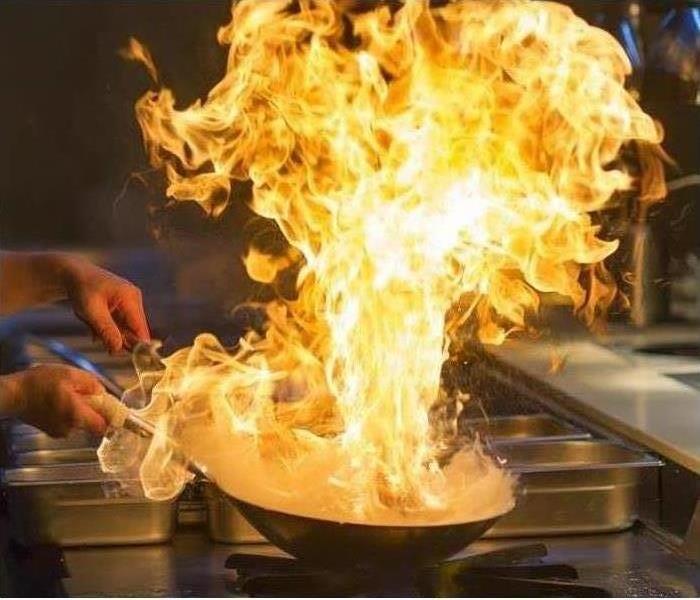 Kitchen fires are leading causes of residential fires.
Kitchen fires are leading causes of residential fires.
Kitchen fires are among the leading causes of residential fires, and they are also the most preventable. If you are looking for fire tips to avoid a kitchen catastrophe, consider contacting a fire mitigation expert in Ogden, UT, or follow six basic rules.
- Never leave
- Clear flammables
- Clean surfaces
- Unplug and service appliances
- Avoid using too much grease
- Install a smoke detector
Follow these 6 Tips to Avoid Kitchen Catastrophe
Never Leave
Most fire damage occurs because a homeowner is not present to stop it before it gets out of hand. When you are cooking or using kitchen appliances, remain in the room or at least in the house, undistracted.
Clear Flammables
Before cooking a meal on the stovetop, remove all flammable materials from the area. You can move rags, towels and other linens into drawers, and paper towels should never be near a burner.
Clean Surfaces
Next in the line of fire tips is to clean all cooking surfaces. Food, old grease and other kitchen debris can cause a fire to ignite. Take a damp cloth and wipe down the stovetop before preparing your meal.
Unplug and Service Appliances
Appliance fires can happen because of power surges or system error. If you are not in the room, unplug the machine. When you finish using an appliance, unplug it. Check manufacturer guidelines for upkeep and maintenance suggestions and follow them.
Avoid Using Too Much Grease
Too much oil or grease in a pan or pot can cause a grease fire. Make sure you are only using the amount of oil you need to reduce your fire risks.
Install a Smoke Detector
Nearly every municipality suggests installing fire and smoke detectors in your home. While having a detector near the kitchen is an excellent idea, install it just outside of the kitchen to avoid inaccurate readings.
The above fire tips can help reduce your kitchen and home fire risks. However, talk to a professional fire safety expert to assess the vulnerabilities of your home.
Fire Safety Tips
3/30/2020 (Permalink)
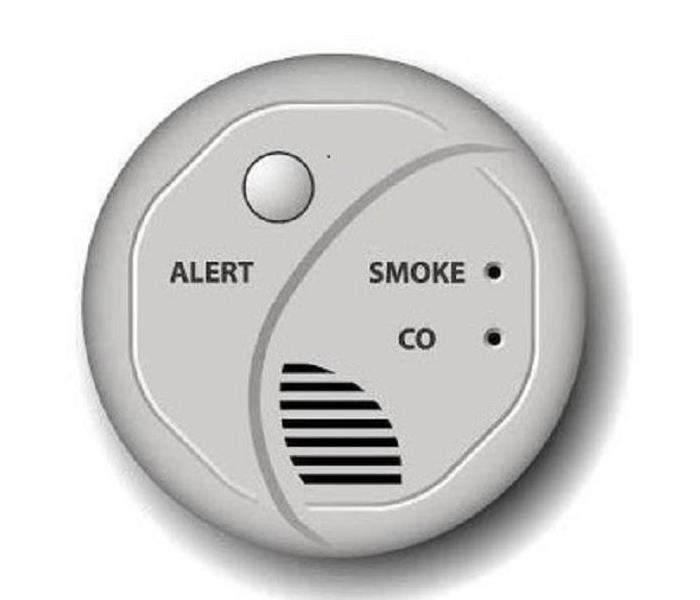 Smoke detectors are important to keep your family safe.
Smoke detectors are important to keep your family safe.
When you own a home in Ogden, UT, you hope that a house fire is something you never have to deal with. If a fire does break out, however, you want to be properly prepared so that your family can get out in time.
Three fire safety tips for ensuring that your fire alarm system is the best it can be.
1. Install Smoke Detectors
Your best chance of getting out of your home quickly in the event of a fire is being alerted to its presence. One detector won't cut it. You need at least one detector on every level of your home, one inside each bedroom and one outside every sleeping area. It is advisable to purchase a combination of ionization and photoelectric alarms, because they detect different types of smoke. You may even be able to find alarms that detect both types of fires.
2. Maintain System
Your fire alarm system needs proper maintenance to ensure that it continues to keep you and your family safe. You should test the batteries in each detector every month and replace them once a year. The smoke detectors themselves need to be replaced every 8-10 years. You may not be able to prevent smoke damage to your home, but with a properly maintained system, you can be alerted in time to avoid personal injury.
3. Practice Escape Plan
Newer building materials burn much faster and hotter than older homes, causing both greater fire damage and heightened danger for those inside. If you live in a newer home, you need to be able to get out quickly. Talk to your family about your emergency escape plan, but don't stop at having the conversation. Practice exactly what you need to do when you hear the smoke alarm go off. Knowing what to do in a fire can save lives.
Your fire alarm system is essential to keeping you safe during a fire. Make sure it is adequate and in good working order so that it can alert your family at the first sign of a fire.
What To Know About an Emergency Board Up
3/4/2020 (Permalink)
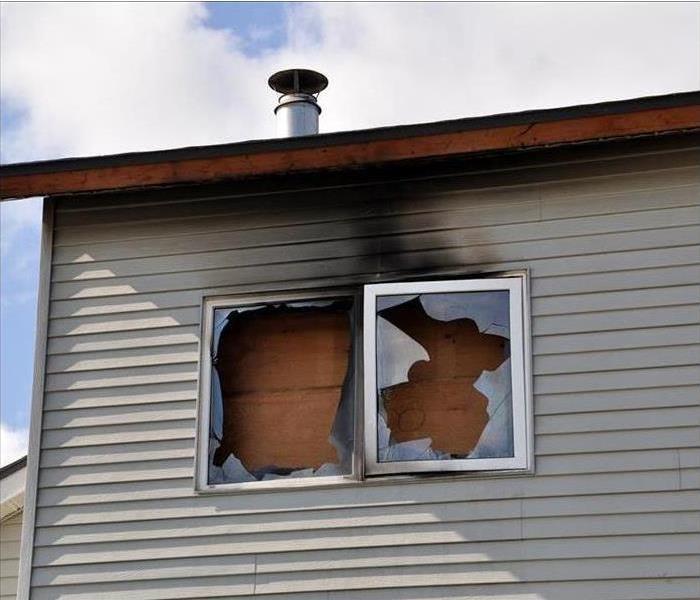 Boarding up after a fire in a West Haven, UT home.
Boarding up after a fire in a West Haven, UT home.
If your West Haven, UT, home has suffered fire damage then you may be looking at the option of doing a board up over the damaged area. There are several reasons you may want to consider this process. Here’s what you may want to know.
How Boarding Up Can Protect Your Home
Having an emergency board up done to protect damaged areas of your home can help protect it from a number of things. Boarding over can
- Prevent inclement weather such as rain or snow from getting inside
- Reduce the possibility of wind damage
- Discourage animals from exploring the damaged area
- Reduce the risk of human trespassers
- Prevent a liability claim from someone who got into the damaged area
- Help maintain insurance eligibility
Insurance Benefits of Boarding Over Damaged Areas
In many cases, your insurance company may require you to board up the damaged area before they will accept your claim. Most policies cover only the initial damages and consider a failure to protect the area before repairs can be made an act of neglect. Boarding over the damage can help show them that you take your responsibilities as a homeowner seriously.
Proper Boarding Up Procedures
Boarding over the damage involves using ply-board or tarps in most cases. It’s important to cover all the damage and secure the edges to prevent weather or animals from getting in. A professional restoration service may be able to do the job for you if you have concerns.
Boarding over the damaged area can not only help protect your home from weather and animals, but it may be required by your insurance company when filing a claim. Fortunately, many restoration services offer the option to have their team do the board up for you. When it comes to protecting your home from fire damage, boarding over the area can help save both time and further costly repairs down the road.
Which Smart Smoke Detector Is Right for Your Home?
1/7/2020 (Permalink)
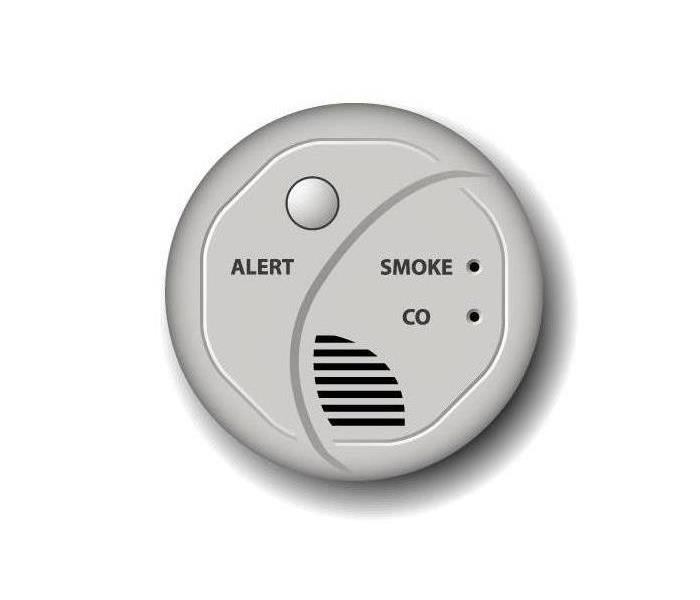 Smoke detectors are important for fire safety in Ogden, UT.
Smoke detectors are important for fire safety in Ogden, UT.
Smoke alarms are an effective way to prevent a home fire and the damage and cleanup that follows, but they can be inconvenient. What if a smoke alarm is sounding at home, but you’re at the grocery store or on vacation? While a standard smoke detector works if you’re in the house, smart smoke detection systems send a push notification to your phone or tablet to let you know within seconds that a home detector has been triggered. Which of these new smart systems is best option for home fire safety?
3 Options of smart smoke detectors.
Internet-Connected Detectors
Switch out your standard smoke detectors with internet-connected ones and you’ll be notified when any alarm goes off. This can be a pricier option, but it offers several advantages:
- Allows you to turn off false alarms from your phone or tablet
- Notifies when you need to replace a battery (no more chirping!)
- Scans for carbon monoxide, depending on the model
Listeners
If you have a larger home, the cost of switching out every detector may be a little too much. Consider starting out with a smart listener device. This nifty gadget scans for the frequency of your smoke alarm and sends you a notification when it hears that frequency. While you won’t be able to silence the smoke detector remotely, a listener should provide coverage for a whole floor of your house and multiple detectors in one (smart) go.
Smart Batteries
The most cost-effective solution, a smart battery connects to your Wi-Fi and sends you a notification when the smoke detector it’s connected to is triggered. With a lifespan of around five years, you won’t need to replace one often, and these batteries send a notification when they are running low. Unlike with a listener device, you can turn off the alarm remotely by deactivating the battery.
Fire safety is no small matter. Whether you’re replacing every smoke alarm with a smart upgrade or you just want to try out a new system, these options can ensure your Ogden, UT, home’s safety from afar.
Securing a Building After a Fire
11/9/2019 (Permalink)
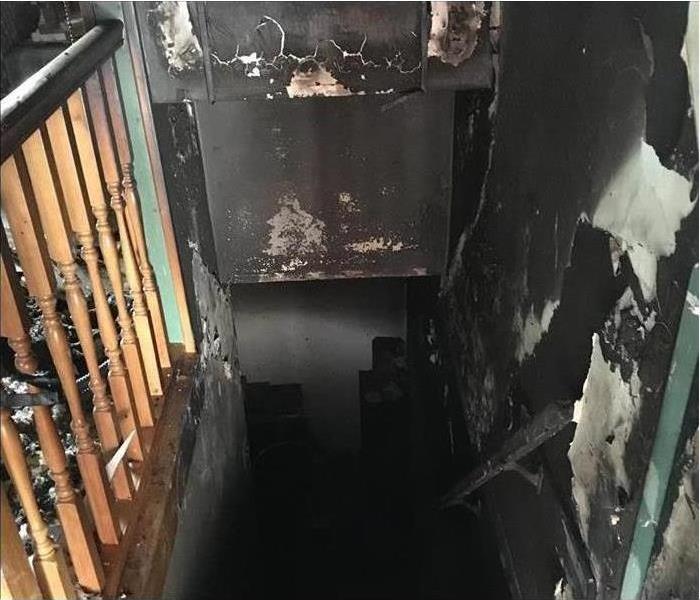 Fire damage in a Ogden, UT home.
Fire damage in a Ogden, UT home.
When fire strikes your building in Ogden, UT, there isn’t anything you can do to stop the chain of events from the moment the fire begins until the second the fire trucks drive away and leave you with the resulting fire damage. What happens next is under your control, however, and you should make sure you are in the best possible position to ride the coming storm of possible looters, scammers, and restoration delays.
3 Ways To Secure Your Building After a Fire.
Access
While your building may seem secure, the following may find a way in:
- Looters
- Burglars
- Squatters
- Errant youths
Fortunately, there are things you can do to make sure people do not have easy access to your property.
Holes
When fighting a fire, the officers may use an ax to knock holes into the roof, walls, or attic areas of your business to spray water onto the flames. When they leave, the holes remain. The heat from a fire can also break windows and sky lights and leave gaping holes.
To prevent intruders from rummaging around or looting in areas of your building that were not destroyed by the flames, soot, or smoke, you must first secure the holes by covering the areas securely with large pieces of wood. If you are unable to put the boards up by yourself, contact a group specializing in fire cleanup and restoration. They can quickly lock-down your building and secure the fire damage area.
Doors
Fire personnel often kick doors down to get immediate access to the fire in a building. When that happens, the locks, door jambs, and walls surrounding the doorways may be broken or damaged. To prevent easy access by intruders into the open doorways, and to prevent looters from having unhindered access to your office possessions or equipment, use more of the large pieces of wood to cover doorways. If necessary, ask the fire cleanup team to help secure the open areas.
Although you cannot guarantee your business will be safe after a fire, you can take steps to secure it from easy access by criminal elements of society. You can help prevent being a target after a fire by repairing fire damage.
What Kind of Damage can Happen in a Business Fire?
6/24/2019 (Permalink)
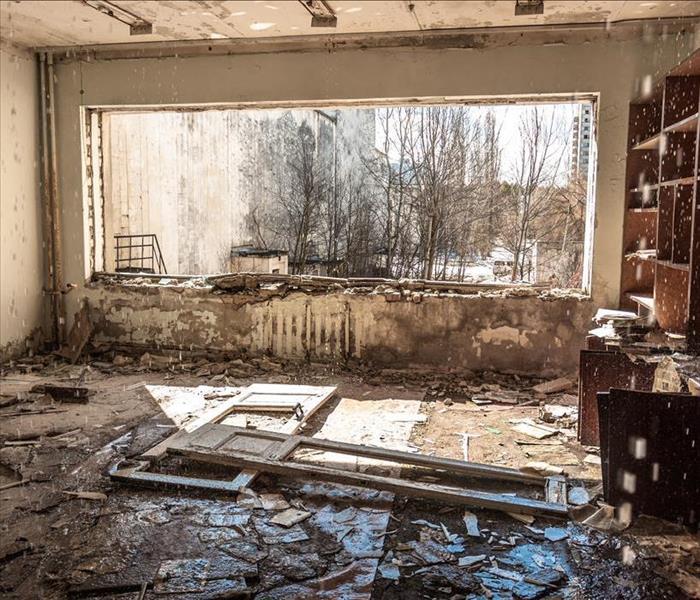 Fire and water damage in a Uintah, UT building
Fire and water damage in a Uintah, UT building
A fire at your place of business can feel like a disaster. You have built your hopes and dreams on the things that go on inside that building and have made a great investment to get it up and running. In the event a fire happens, you may have no idea what to expect and what needs to be done to deal with the fire damage.
Types of Damage From a Fire
As you would expect, flames may burn furnishings and other items that they come in contact with. There are other types of damage that can happen as well.
- Fire damage including consumption, melting and soot
- Water damage from fire hoses
- Potential additional damage from fire sprinklers
How can Water and Fire Ruin Items?
In some cases, flames may not be extensive, but the fire sprinklers may be triggered by the excessive heat causing water to spray down over the contents of the office. This water can be damaging to both the structure and content. Once the fire department deems it safe they can shut off the water so that no more destruction can take place.
In the case of a larger fire, emergency responders may apply endless gallons of water with a high-pressure fire hose in their efforts to extinguish the flames completely. That can cause a good deal of water damage to the structure and the contents. Sheet rock and sub floors, studs and the building’s contents can be stained, swollen, disintegrated or in other ways ruined by water.
It may sound hopeless, but rest assured there is help. In Uintah,UT, you can call on fire and water restoration professionals to assess the damage and to help with the cleanup. Items with water or fire damage may be salvaged or disposed of depending on the extent of the destruction. Once the cleanup is completed, a complete restoration can take place. You can get back to business and feel secure again.
4 Tips on Conducting an Emergency Fire Drill at Work
4/17/2019 (Permalink)
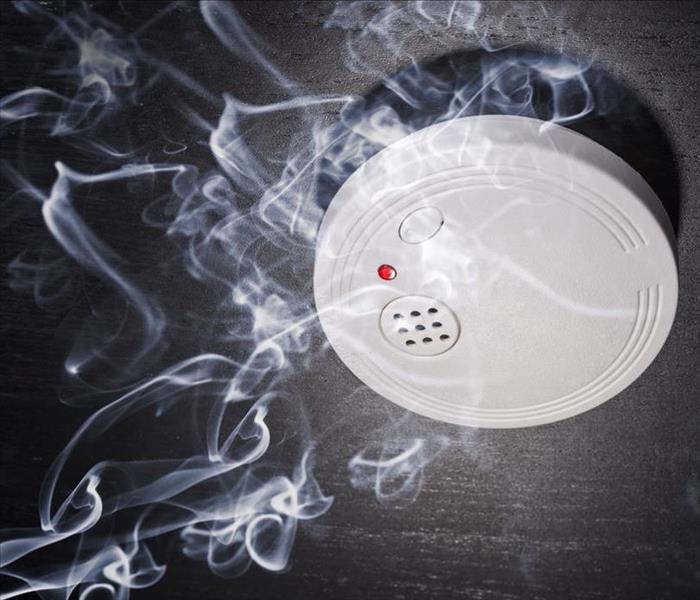 Test alarms monthly and replace batteries twice a year.
Test alarms monthly and replace batteries twice a year.
Unexpected emergencies can creep up on anyone at any time, even at work. Fires can be one of the most feared dangers because of the smoke, flames, and inability to see. That is why many business owners choose to have a fire drill in place for their employees. Once the drill is in place, employees can be certain of their escape route, which will aid in almost any other possible emergencies as well, such as windstorms, tornadoes, or gas leaks.
Four steps to help you create a safety drill in Ogden, UT.
- Alarms should be distinct. Alarms should also be connected to an auxiliary power source. Make sure the sound of the alarm can be heard throughout the building, including the restrooms and breakrooms. Also, test alarms monthly and replace batteries twice a year. When beginning the drill, use the alarm to familiarize employees with the sound.
- Give emergency action plan information to all employees. The plan should include an escape route, designated meeting area outside the building, and special safety instructions. Also, consider offering a short presentation once a year on fire drill strategies and ask for employee input.
- The evacuation route should be tailored to your employee’s needs. The path should be free of debris and allow everyone to exit the building easily. If you employ a disabled individual, the route should accommodate his or her needs as well. Once the path has been established, post signs along the exit walls.
- Appoint a safety committee to perform a disaster drill monthly. After each drill, management and committee members may consider meeting to discuss concerns about the effectiveness of the drill. This allows you to revise your emergency action plan as needed and contact professionals with any questions that arise.
Conducting a disaster preparedness fire drill at work can keep employees from becoming overwhelmed during a crisis. By using the four steps listed above, you can make sure that if a disaster hits Ogden, UT, your employees know what to do.




 24/7 Emergency Service
24/7 Emergency Service






















